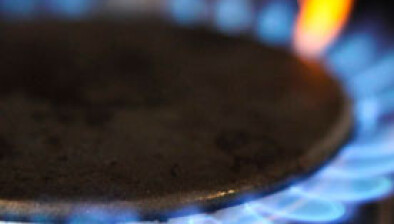Katy Syme: Meeting the challenges of fuel poverty and climate change

Katy Syme
In this guest blog for CIH Scotland, Katy Syme talks about how Changeworks is supporting the housing sector to deliver on challenging targets and juggle competing priorities.
Changeworks is Scotland’s leading environmental charity delivering solutions for low carbon living – a trusted expert with over 30 years experience.
We have extensive experience in analysis of building stock, modelling energy efficiency measures and in delivering energy efficiency upgrade projects and so are ideally placed to support social landlords to meet Energy Efficiency Standard for Social Housing 2 (EESSH2). We are currently working with a number of housing associations and local authorities to analyse and upgrade their housing stock.
Changeworks currently delivers the Scottish Government’s Energy Efficient Scotland: Area Based Schemes (EES:ABS) for four local authorities. Traditionally the schemes only included insulation measures but for the 2019/20 funding year, air source heat pump installations are also being funded to provide low carbon heat for householders.
However, this low carbon heat does not always reflect positively on the energy efficiency rating or the Energy Performance Certificate (EPC) rating. In some cases, moving from a higher efficiency gas boiler to an electric powered heat pump can cause a decrease in the energy efficiency rating, due to the higher emissions values attributed to electricity in the calculation software (SAP). This can mean that despite best intentions, the low carbon heating solution, with a lower environmental impact, may not result in a higher EPC rating.
The Scottish Government’s ambition for warmer, greener and more efficient homes should mean that occupants are warm and comfortable. However, a focus on EPC and energy efficiency ratings for legislative targets may mean that this objective is missed, or that householders are negatively impacted in other ways, through poor quality installations, poor indoor air quality or higher bills.
A formal review of EESSH2 is proposed for 2023, is to include air quality and the environmental impact of improvements. It is unclear to what extent these are considered by landlords in energy efficiency planning at present. However, if we want warmer, more comfortable householders, we all need to consider energy efficiency in a more holistic way.
Scottish Government’s Energy Efficient Scotland (EES) programme sets out a vision for 2040 where homes are warmer, greener and more efficient. The EES Route Map published in 2018 sets out a series of actions to help achieve this including improving the energy efficiency of housing and decarbonising heat. Heating, cooling and running homes in Scotland accounts for around two-fifths of the country’s energy consumption. In 2017, this amounted to 44.7TWh.
The Climate Change Plan includes a 2032 interim target for the emissions intensity of residential buildings to fall by at least 30% based on 2015 levels. To support this, the Government has a range of packages available to different tenured properties, including ‘carrots’ such as grant funding, loans and provision of free or discounted measures, and ‘sticks’ including regulatory targets for energy efficiency.
At present, the social housing sector has the most stringent targets of all tenures. The first round of EESSH has just drawn to a close, with properties required to meet a minimum energy efficiency rating by the end of December 2020. EESSH2 is now underway, with a target for all social housing to meet EPC Band B, or to be as energy efficient as practically possible by the end of December 2032 – within limits of cost, technology and necessary consent.
Minimum energy efficiency standards for the private rented sector were due to be rolled out in 2020 but were postponed due to the COVID-19 crisis. Proposals for similar standards for owner occupier properties were consulted on in 2019 but details have not yet been announced.
In 2018, only 44% of all Scottish homes were rated as EPC Band C or higher, so there is clearly a lot of scope for improvement. EPC ratings vary considerably from tenure to tenure, likely due to the differing energy efficiency programmes and EESSH targets. For example, levels of wall insulation are higher in the social housing sector; 70% of walls in social housing are insulated compared to just 55% in the private sector.
As well as insulation, heating upgrades and improvements will also be required to ensure Scotland’s homes are warmer and more environmentally conscious by 2040. Air source heat pumps (ASHPs) are an increasingly common replacement heating approach, providing low carbon heat for properties on and off the gas grid.
If you’d like to talk about how Changeworks can help you to meet your low-carbon goals, contact our team on 0131 555 4010 or ask@changeworks.org.uk.









